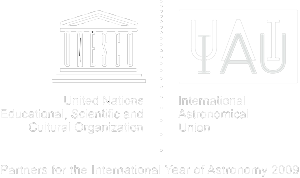The Financing Forum for Kids Content - an international co-production for Kids Content - joins hundreds of experts, who work with creating, producing, distributing and financing digital content for kids. Universe Awareness participated in the latest forum, from 10- 12 March 2015 in Malmo, Sweden. During the event we discussed what it requires to engage children as an audience. For the full event programme, click here.
Lessons learned at Kids Content Forum
To produce good educational content for kids we always have to start by targeting our audience, being original and fun, thinking about the kind of message that we want to send, while taking the specifics of the audience into account: how old is our target, what are their interests and what is the best way to reach them and communicate to them? There is no secret formula but certainly there are some tips that will help engage the audience (with for instance a movie or a TV program).
To begin, we must realise that we are dealing with children: the “most sophisticated audience in the world at all times”. Children think and process information differently from adults. For them, being online and being digital from a really early age is natural and nowadays kids actually create the content as well, instead of just consuming it.
If you want to be successful in developing digital content for kids, first of all you have to have a really clear and funny story and have to know terms like:
-
the magic circle, meaning that the kids are truly interested in the film/ story but also that the parents approve the contents, and that the critics make a good review (the called seal of approval);
-
the WOM – word of mouth - still is the best way to get people to know your project/work;
-
co-create - meaning that the spectator has a role, is a creator and also a participant that can help us with the contents.
-
extra materials - to complete the experience it’s also good to have other materials available, for example a book, some digital content like a webpage where the kids can do, for example, a funny dance in a film, masks with the face of their favourite characters or just play smart games.
Language barriers
A very important point discussed at the Forum was about the most effective way to get children to watch foreign language films and it had to do with the dubbing and subtitles. The research done shows that even though the series were not in their mother tongue, if the kids are interested in the theme they can understand, as they adapt their reception mode. However, this is not a consensual opinion, as some think that we have to deal with some other factors.
So with or without subtitles? Dubbing or not and when? It depends on the age, culture/country because sometimes they either don’t read fast enough or don’t read at all yet. And at some ages they don’t need to understand everything but with 5-6 years old they need to understand everything. Also the translation is sometimes difficult depending, for example, on the context that the film it’s done – cultural issues. In other cases it’s too expensive to buy the copyrights and translate, so sometimes recording it with the voice off makes it easier.
Engagement
However, all agreed that the most important thing is designing experiences for emotional engagement (for kids to get involved with the story). At the end, they have to have a good experience, feel happy and learn something. What is funny is that sometimes kids learn other languages just by reading the subtitles. So, the ideal situation is a mix – present them the content in the original language and subtitle, with voice off.
To summarize, we are dealing with collaborative formats, so it seems that the roles are switching and we’re moving towards a more democratized culture where “users get together and create content”. We also have a “new” target: the grandparents – they have time and money to take the grandchildren to a museum where we have a science experiment, for instance, that this has to be a meaningful experience and at the end if you can get kids' reactions and feedback that will help to improve the process of creating content.
Written by Maria Gaivão, Knowledge Transfer Officer Universe Awareness













